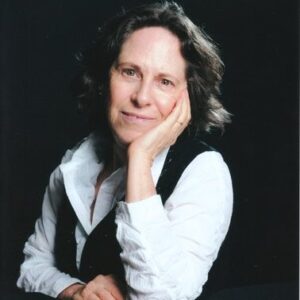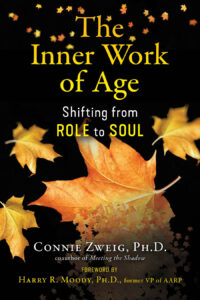Connie Zweig, Ph.D is the author of the award-winning book The Inner Work of Age: Shifting from Role to Soul, co-author of Meeting the Shadow and Romancing the Shadow, and the novel A Moth to the Flame: The Life of Sufi Poet Rumi. Her new book is Meeting the Shadow on the Spiritual Path: The Dance of Darkness and Light in Our Search for Awakening. Connie is also a retired psychotherapist, former executive editor at Jeremy P. Tarcher Publishing, former columnist for Esquire magazine, and contributor to the LA Times. Connie has been doing contemplative practices for more than 50 years.
On November 15th at 7 pm she joins us to present A Life Review. The traditional life review is a well-known tool for those in midlife and beyond who wish to recall memories, release conflicts, and find forgiveness. Connie describes this as the ego’s life review, the story we consciously lived out. But we know from psychology that the personal unconscious, or Shadow, carries its own stories. She will add the dimension of Shadow to bring a deeper perspective to your life story. Demonstrating with an animated Power Point, we will explore how to connect what was expressed in your conscious life with what was repressed and unlived in your shadow. In this way, your unlived life moves into conscious awareness, and you can reclaim some of what was sacrificed—lost dreams, talents, and opportunities for self-expression, reconciliation, and healing. This session is hosted live on Zoom. Please register for this fascinating talk on Eventbrite.
Connie’s book The Inner Work of Age: Shifting from Role to Soul won the 2022 Gold COVR Award, the 2022 Gold Nautilus Award, the 2021 American Book Fest Award, and the 2021 Best Indie Book Award for best inspirational non-fiction.
Here is an excerpt from Connie’s book:
“Most of us live our lives in reaction to changing circumstances, in the details of the moment that require our energy and attention to meet our survival needs, our emotional needs, and the needs of those we love. We are lost in those moments as if they are disconnected from what came before or what comes after.
As the great existential philosopher Kierkegaard said, “We live life forward but understand it backward.”
I believe that the effort to understand it, repair it, and find meaning in it is a natural developmental task of late life. As we suffer disorientation with the loss of the ego’s agenda, a life review can help us reorient to the soul’s mission, a deeper purpose for late life.
But no one teaches us how to do this in a thoughtful, organized way. No one teaches us how to digest the life we’ve lived, distill the lessons from it, and turn them into wisdom. So, we watch older people trying urgently to tell their stories or reminiscing in a way that makes them appear to be lost in the past.
Fifty years ago, experts in the field of aging believed that this reminiscence was a sign of senility, which reinforced ageist stereotypes. But renowned gerontologist Robert Butler discovered that many older people seem to be experiencing a profound internal effort to come to terms with everything that happened to them in the past. He coined this phenomenon “life review” and concluded that it is a normal, necessary task of late life, not a pathological one.
Butler suggested that the purpose of life review, whether spoken or written, is to recall unresolved conflicts and reconcile with them through seeing a larger picture or reframing the events. This may lead to reconciling with estranged loved ones, making amends and forgiving them, or forgiving ourselves. In the best case, it leads giving up denial or blame and becoming accountable for the life we’ve lived.
People may feel the need to review their lives as a gentle nudge to see it from the long view, not through the eyes of youth or the eyes of middle age. We want to recognize what we have made with the life we were given– or what it could have been if it had unfolded differently. We want to detect the patterns in our choices, the results of our actions, the coincidences in seemingly chance encounters, and the residue of unfulfilled desires–the full weave of the tapestry and the images revealed there.
Sometimes, the shock of mortality awareness triggers the desire to review our lives, evaluate our achievements, and possibly design a new direction. Or the reality of retirement may catalyze a process of self-reflection about the past and inquiry about the future. For others, the event of becoming a grandparent stirs a need to tell their stories, to record a written or video life review to create a legacy for future generations. For others, a nagging guilt or shame brings up a need for emotional repair, which requires us to look back and examine when we were harmed or harmed others.
In a less intentional way, other people appear to tell the same stories from the past in a dream-like, nostalgic reverie, as if to digest something that’s stuck somewhere or to complete something that’s unfinished. They may secretly fantasize about the life they did not live, which they could be living if only this had happened or not happened. Their minds wander between reality and fantasy, between what is and what’s out of reach. Between choices made and not made, opportunities lived and opportunities missed, loves gained and loves lost. And they are haunted by internal shadow characters that grieve lost potential, regret abandoned gifts, long for ideal lovers, and mourn unfulfilled dreams.
In late life, these shadow characters inhabit us and inhibit us from redesigning our lives now. They form the fifth inner obstacle: remaining stuck in denial about the past or stuck in fear about the future. The result: We live in a narrow band of time, unable to make the shift from role to soul. Instead, with a life review, we can gain the opportunity to see the full arc of a lifetime from a higher, broader vantage point. We can see how the key moments in our lives were interconnected and became sacred passages with a hidden purpose, which I call evolution of the soul.

